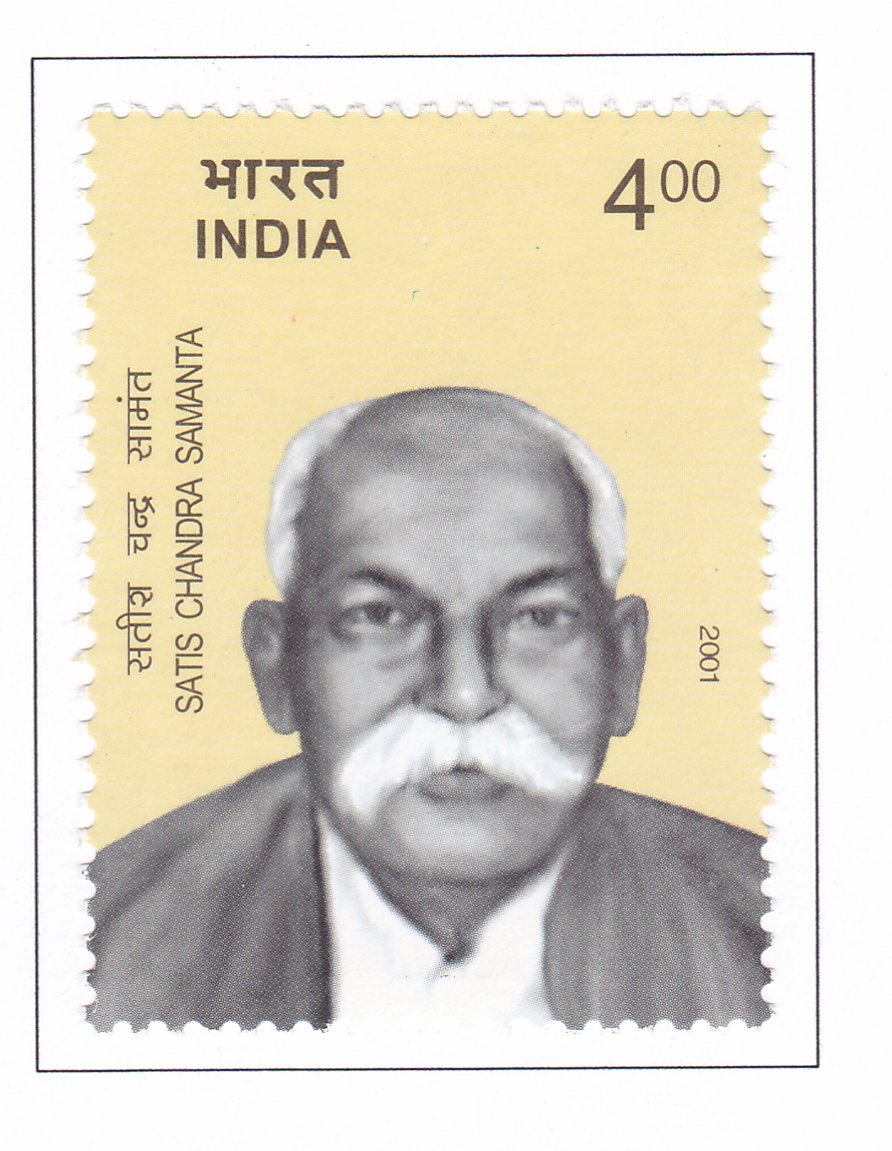Satis Chandra Samanta (1900-1983)

Technical Data
| Date of Issue | September 29, 2001 |
|---|---|
| Denomination | Rs. 4 |
| Quantity | 400,000 |
| Perforation | comb 13 |
| Printer | Eagle Press Ltd. |
| Watermark | No Watermark |
| Colors | Multicolor |
| Catalog Codes |
Michel IN 1854 Stamp Number IN 1913 Yvert et Tellier IN 1619 Stanley Gibbons IN 2019 |
| Themes | Commemoration | Famous people | Men | Politicians |
Table of Contents
Satis Chandra Samanta (1900-1983)
Satis Chandra Samanta (1900–1983), a veteran freedom fighter from West Bengal, was known for his dedication, leadership, and selfless service to the nation. Here’s a brief account of his remarkable life and legacy:
Early Life and Inspiration:
- Early Hardships and Spiritual Influence: Satis Chandra Samanta faced the hardship of losing his mother in infancy but found solace in the teachings of his Guru, Swami Pragnanananda Saraswati, at the age of fifteen. The Guru’s influence led him to adopt Brahmacharya (celibacy) and dedicate his life to serving humanity.
- Abandoning Studies for the Freedom Struggle: While studying engineering at Shibpur Engineering College, Satis Chandra Samanta chose to leave his education behind to join India’s fight for independence.
Role in the Indian National Congress:
- Public Life and Leadership: Satis Chandra began his public life through the Indian National Congress, rising to become the President of the Tamluk Congress Committee. His leadership and energy made him a respected figure, beyond party politics, known for his devotion to the public good.
- Social Work: Alongside the freedom struggle, he engaged in social service, organizing efforts to combat diseases like malaria and cholera, setting up medical camps, and promoting education and literacy in rural areas.
Leader of the Tamralipta Jatiya Sarkar:
- Quit India Movement and Formation of the National Government: One of Satis Chandra Samanta’s most significant contributions came during the Quit India Movement of 1942. As British repression intensified, the people of Tamluk (now in Purba Medinipur, West Bengal) formed the Tamralipta Jatiya Sarkar (Tamralipta National Government) to establish order amidst anarchy.
- Sarbhadhinayak (Dictator) of the National Government: Satis Chandra Samanta was chosen to lead this government and served as its Sarbhadhinayak, overseeing its functioning with fairness and efficiency from December 17, 1942, until his arrest in June 1943.
Post-Independence Contributions:
- Parliamentary Service: In independent India, Satis Chandra Samanta served as a Member of Parliament for nearly three decades. His contributions extended to numerous Parliamentary Committees, where he worked as both a Member and Chairman, making significant policy contributions.
Legacy:
Satis Chandra Samanta is remembered as a selfless leader who seamlessly balanced his commitment to both the freedom struggle and public welfare. His leadership of the Tamralipta Jatiya Sarkar, along with his dedication to rural upliftment, makes him a respected figure in India’s freedom movement. The Department of Posts honored him with a commemorative postage stamp, recognizing his immense contributions to the country.
Satis Chandra Samanta’s life exemplified service, leadership, and dedication to both national independence and the betterment of society.
